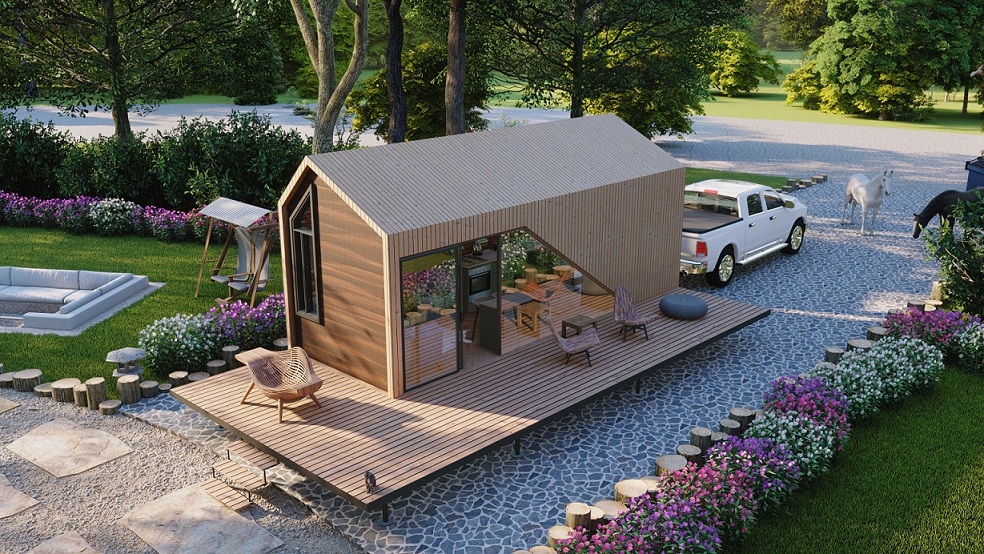Tiny House
 A tiny house, also known as a micro house or a small house, is a compact dwelling that is typically much smaller in size compared to a traditional house. While there is no strict definition, tiny houses are generally under 400 square feet (37 square meters), although some can be as small as a few hundred square feet or even smaller.
A tiny house, also known as a micro house or a small house, is a compact dwelling that is typically much smaller in size compared to a traditional house. While there is no strict definition, tiny houses are generally under 400 square feet (37 square meters), although some can be as small as a few hundred square feet or even smaller.Tiny houses are designed to maximize space efficiency and functionality, often featuring innovative design elements and multi-purpose furniture. They offer a minimalist lifestyle with a smaller environmental footprint and lower maintenance costs. Tiny houses can be built on foundations or on wheels, allowing for mobility and flexibility.
There are different styles and designs of tiny houses, ranging from modern and contemporary to rustic or cabin-like. They can include features such as lofted sleeping areas, foldable furniture, hidden storage spaces, and energy-efficient systems. Despite their small size, many tiny houses aim to provide a comfortable living experience with well-utilized space for cooking, bathing, sleeping, and living areas.
People choose to live in tiny houses for various reasons. Some are attracted to the simplicity and affordability they offer, allowing them to reduce debt and live more sustainably. Others see tiny houses as a way to downsize and focus on experiences and minimal possessions. Tiny houses can also serve as additional living spaces, guest houses, or even home offices.
It's important to note that building and zoning regulations for tiny houses vary by location. Some areas have specific codes and restrictions, while others may be more lenient or have specific regulations for tiny houses on wheels. If considering living in a tiny house, it's important to research local regulations and ensure compliance with legal requirements.
Overall, tiny houses provide an alternative housing option that appeals to individuals seeking a simpler and more compact way of living.
Contact person: Mr. Pera
Position:
Mobi: 0850 888 99 66
Phone: - Fax:
SEND INQUIRY
Please fill in fully your information to send email
CATEGORY

